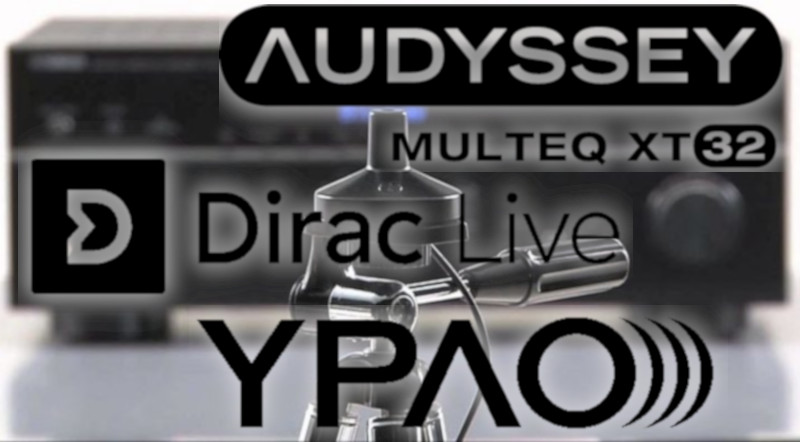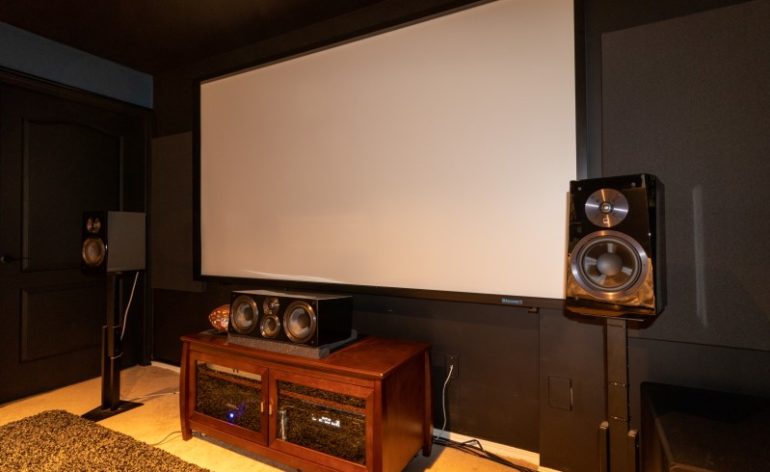How To Add a Center Speaker to Your Home Theater
You were smart. Rather than go all in on a substandard speaker system, you started small. You got yourself an AV receiver and a couple of speakers. You knew what you needed and you didn’t overbuy. After saving up some more money, you are ready to invest in a matching center speaker. But that has you thinking – how do you actually integrate that into your existing system? Do you just run some wires and it just works? How do you add a center speaker to your home theater the right way? Let’s discuss!
Yes, Running Wires is Step One
It is almost always true that step one is to run speaker wire from your AV receiver to your new center speaker. That nearly goes without saying. You may be in a situation where you are using an external amp or maybe a wireless solution, but chances are you are using speaker wire. Run that wire, place your center speaker as optimally as possible, and grab your AV receiver’s remote.
Automatic Room Setup is Your Friend
If you have an AV receiver with an automatic setup function (usually attached to its room correction program), you’ll want to start there. Your automatic setup should walk you through all the steps to add your new center speaker to your home theater. But if you are more hands-on, you can do it manually.

Manually Adding a Center Speaker to Your Home Theater
The manual steps will help you add your center speaker, but also verify that your automatic setup function did everything correctly. Let’s start with the basics.
Step 1: Tell Your Receiver You Have a Center Speaker
Go into the menus of your AV receiver and look for something labeled speakers or sound. You want to find the Speaker Configuration menu. Here, you will usually get some sort of screen that will allow you to indicate Yes or No to every possible speaker position your receiver can power. Make sure that your front left and right speakers are enabled (they should be if you were using them before) as well as your center speaker.
Step 2: Speaker Size
Usually, in the same menu, it will allow you to set your speaker size. The options will be Large or Small. If you don’t have a subwoofer, you can choose between the two. If you do have a subwoofer, or if your left and right speakers are large and can play lower, set the center speaker to Small.

Step 3: Level Matching
Next, you need to ensure that your new center speaker is playing as loud as the rest of your speakers. You do this by finding the Speaker Levels or Trim menu. Here, you’ll find the ability to play a test tone through each of your speakers. Grab your trusty SPL meter and adjust the trim level within the AV receiver’s menu so that your Center speaker is playing at 75dB.
It is important to note that AV receivers handle these test tones differently. You want them to come out at 75dB. Some AV receivers will always play the tones at 75dB. Others will play them as loud as is indicated on the volume setting. For this reason, always set your volume to 0dB (reference level) before starting the test tones. Also, remember to reduce the volume afterward to avoid excessive volume when you switch to using your system normally.
Step 4: Distance
Lastly, you’ll want to adjust the distance setting. As we’ve said before, the distance setting is really a delay and not the actual distance from the speaker to your seat. That said, it does correlate with the physical distance pretty closely most of the time. Measure from your seat (where your head would be) to each speaker and adjust the setting accordingly.
Step 5 (Only Applies to Center Speakers Set to Small): Crossover
If you’ve set your center speaker to small, you’ll want to adjust the crossover. This tells the AV receiver at what point to start sending the bass to your subwoofer. We always recommend you start at 80Hz but you can read our complete guide here.
That’s It!
And you are done! You should now have a fully functional and working center speaker added to your home theater. If you’ve used your automatic setup function, we still recommend you go through the manual steps to double-check the settings. The distance and trim levels are almost always correct but oftentimes the auto-setup will set speakers to large and crossovers too low. It pays to double-check.
Have you had issues adding a center speaker to your home theater? Let us know your problem in the comments and we’ll try and help!


